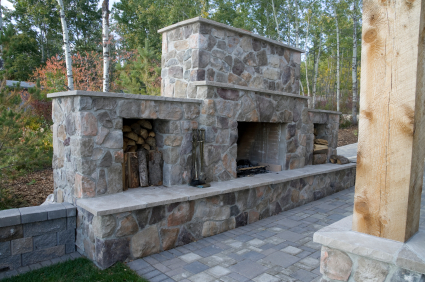 Canning is a valuable skill because it’s completely low-tech. If you have a way to boil water, you have a way to preserve food.
Canning is a valuable skill because it’s completely low-tech. If you have a way to boil water, you have a way to preserve food.
Learning to use the two different types of canning methods, water bath canning, and pressure canning, and familiarizing yourself with those techniques, means that you will have a different comfort level when attempting them over an open fire in the back yard, for instance.
Thinking Outside of the Canning Pot
Consider some different ways that you might be able to bring a large pot of water to a boil. If you are lucky enough to have a wood stove with a flat surface in your home, you will easily be able to can your harvest. However, in the middle of summer, when harvests are coming in, a blazing fire inside your home is likely to make the environment nearly unbearable.
Another option is to construct an outdoor fireplace. The grill or cooking surface must be sturdy enough to hold a heavy pot full of water and at least half a dozen jars full of food or a disaster of broken glass and ruined food could occur.
Some options for outdoor canning are:
- A brick of concrete fireplace with a fireproof cooking surface
- A fire pit with a grill over the top
- A Mexican style “beehive” oven
Whatever method of outdoor canning you use, make sure you have plenty of wood to burn in order to keep the heat high enough to maintain the pressure in a pressure canner or to maintain a hard boil in a water bath canner. Your method should allow you to tend the fire without moving your canning pot. You should also have plenty of heavy towels and heat protection for adding and removing your jars from the canner. Extreme caution should be used when cooking over an open fire.
Stock up on your basic supplies (lids, rings, jars, pectin, vinegar, salt, and sugar). Tattler is the only company that makes reusable lids – the rest of the snap lids on the market must not be re-used. The Tattler lids are pricey but they do pay for themselves after a few seasons.
Learning to can now, in a more ideal environment, means that you will be able to adapt your methods better in the event that the grid goes down. Personally, my first two attempts at jam-making resulted in….well, let’s call it syrup, or perhaps ice cream topping. I was able to figure out how to improve my process and stock up on a type of pectin that works better for me. However, if my first attempt at jam-making had occurred after a long-term disaster, the supplies I had on hand would be all I had available with which to work.
The key to survival is versatility. Being able to adapt your current canning methods to techniques that do not require the grid will allow you to thrive by preserving your harvests and your game in the same way our ancestors did.
This article was originally published at Ready Nutrition™ on July 26th, 2012







Very cool ideas. Never really considered doing it outside but makes perfect sense. Thanks
Good Evening Tess…..was wondering if a propane gas barbaque would work…..I remember doing a wild grape jelly years ago, and was going to attempt chilly sauce in a couple weeks.
Hi Sandy,
Alternative methods are risky because they often do not heat evenly, and the USDA doesn’t recommend it. That being said, it has been done. And I have read where people can on grills in order to cut down on heat build up in their homes. One thing to consider is you will need A LOT of heat to can with radiant heat. So, it may not be very energy efficient, but it can be done. If you do can on your grill, I would also suggest putting a barrier between the can and the grill to protect the glass jars.
There are a lot of forums that have discussed this question in length. Here are a few of the links:
http://forums.gardenweb.com/forums/load/harvest/msg1200312320977.html
http://www.survivalistboards.com/showthread.php?t=77958
I hope this helps,
Tess
Most canners caution against canning over open flame, it can warp your canner. Try finding a firm surface to put between the flame and your pressure canner. A heavy grill or cast iron works nicely
will oxygen absorbers kill any bugg if it is in your food when you repackage it for storage?
Connie,
Oxygen absorbers main purpose is to absorb any additional oxygen that happens to be in the sealed container. If you are concerned about bugs or insects eggs on your food you can do a few different things.
1. Freezing Method – Freeze food for 72 hours.
2. Heating Method – Heating the food in a warm oven at 150 degrees F for 15-20 minutes.
3. Organic Option – Diatomaceous earth are the fossilized remains of diatoms. They are organic and are safe to use on food. Ensure that you use the food grade diatomaceous earth and use 1 cup to every 25 pounds of food.
Hope this helps,
Tess